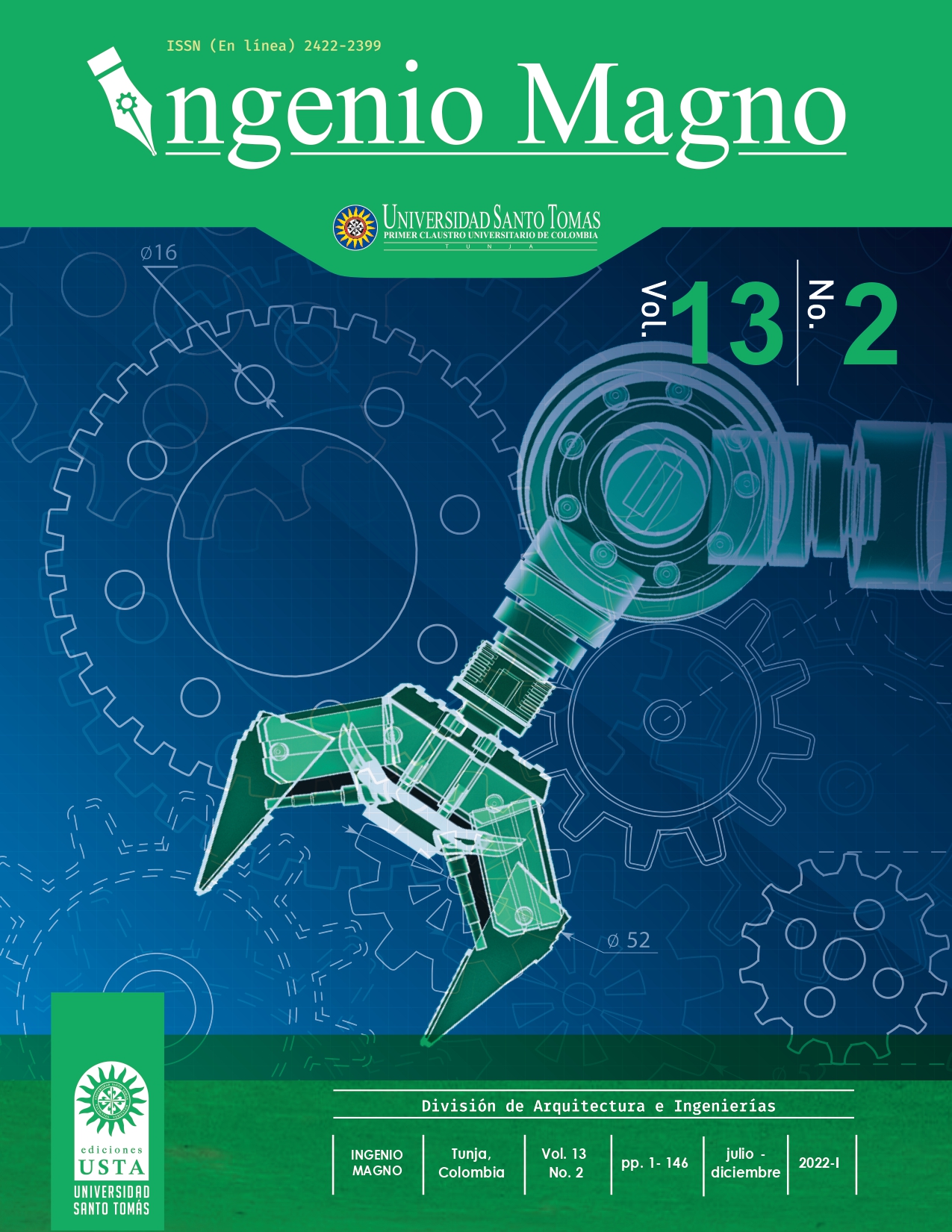Thermal Evaluation of A Tunnel-Type Solar Dryer with Hybridization of Solar Technologies
Main Article Content
Abstract
Downloads
Article Details
DECLARATION OF ORGINIALITY OF SUBMITTED ARTICLE
With this document, I/We certify that the article submitted for possible publication in the institutional journal INGENIO MAGNO of the Research Center Alberto Magno CIIAM of the University Santo Tomás, Tunja campus, is entirely of my(our) own writing, and is a product of my(our) direct intellectual contribution to knowledge.
All data and references to completed publications are duly identified with their respective bibliographical entries and in the citations thus highlighted. If any adjustment or correction is needed, I(we) will contact the journal authorities in advance.
Due to that stated above, I(we) declare that the entirety of the submitted material is in accordance with applicable laws regarding intellectual and industrial property, and therefore, I(we) hold myself(ourselves) responsible for any complaint related to it.
If the submitted article is published, I(we) declare that I(we) fully relinquish publishing rights of the article to the University Santo Tomás, Tunja campus. As remuneration for this relinquishment of rights, I(we) declare my(our) agreement to receive two (2) copies of the edition of the journal in which my(our) article appears.
References
Castillo-Téllez, M., Pilatowsky-Figueroa, I., López-Vidaña, E. C., Sarracino-Martínez, O., & Hernández-Galvez, G. (2017). Dehydration of the red chilli (Capsicum annuum L., costeño) using an indirect-type forced convection solar dryer. Applied Thermal Engineering, 114, 1137–1144. https://doi.org/10.1016/j.applthermaleng.2016.08.114
Chouicha, S., Boubekri, A., Mennouche, D., & Berrbeuh, M. H. (2013). Solar drying of sliced potatoes.an experimental investigation. Energy Procedia, 36, 1276–1285. https://doi.org/10.1016/j.egypro.2013.07.144
Deng, Z., Li, M., Xing, T., Zhang, J., Wang, Y., & Zhang, Y. (2021). Literature research on the drying quality of agricultural products with using solar drying technologies. Solar Energy, 229, 69–83. https://doi.org/10.1016/j.solener.2021.07.041
Dufera, L. T., Hofacker, W., Esper, A., & Hensel, O. (2021). Physicochemical quality of twin layer solar tunnel dried tomato slices. Heliyon, 7(5). https://doi.org/10.1016/j.heliyon.2021.e07127
Fargali, H. M., Nafeh, A. E. S. A., Fahmy, F. H., & Hassan, M. A. (2008). Medicinal herb drying using a photovoltaic array and a solar thermal system. Solar Energy, 82(12), 1154–1160. https://doi.org/10.1016/j.solener.2008.05.016
Kumar Mahara, N., & Nema, P. (2017). Review on Solar Energy Dryer for Drying the Agricultural Products. IJSRD-International Journal for Scientific Research & Development|, 5(08), 2321–0613. www.ijsrd.com
Vaghela, D., Bhautik, G., Sengar, S. H., & In, & S. (2018). Comparative Study of Solar Tunnel and Open Sun Drying for Moringa Oleifera Leaves. 7(2), 472–476. www.ijset.net

